Introduction to K8sGPT and AI-Driven Kubernetes Engineering
The Future of DevOps Engineers
Evolving Roles in an AI driven World
DevOps engineering is at a crossroads. As AI accelerates automation, our responsibilities shift from executing tasks to orchestrating intelligent agents. In this article, we’ll compare traditional Kubernetes management with AI-assisted workflows and outline how your role will evolve into higher-level strategy, training, and oversight.
From Executors to Orchestrators
Gone are the days of manually running kubectl commands for every deployment. AI-powered controllers can now handle routine operations, freeing you to design workflows, define policies, and supervise autonomous agents.
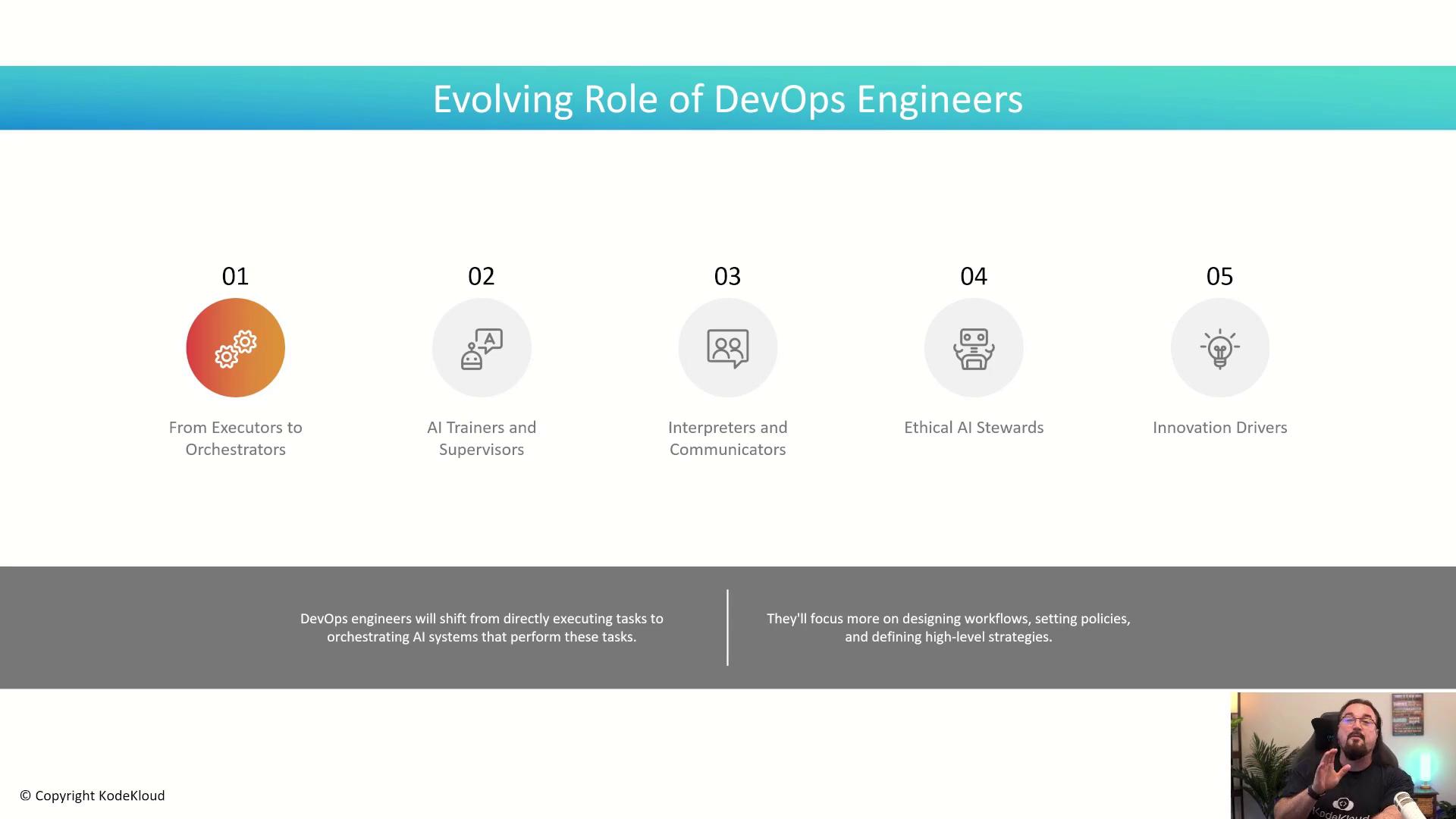
AI Trainers and Supervisors
As AI trust matures, you’ll become the institutional memory for these systems—teaching best practices, validating agent decisions, and intervening in novel or critical scenarios.
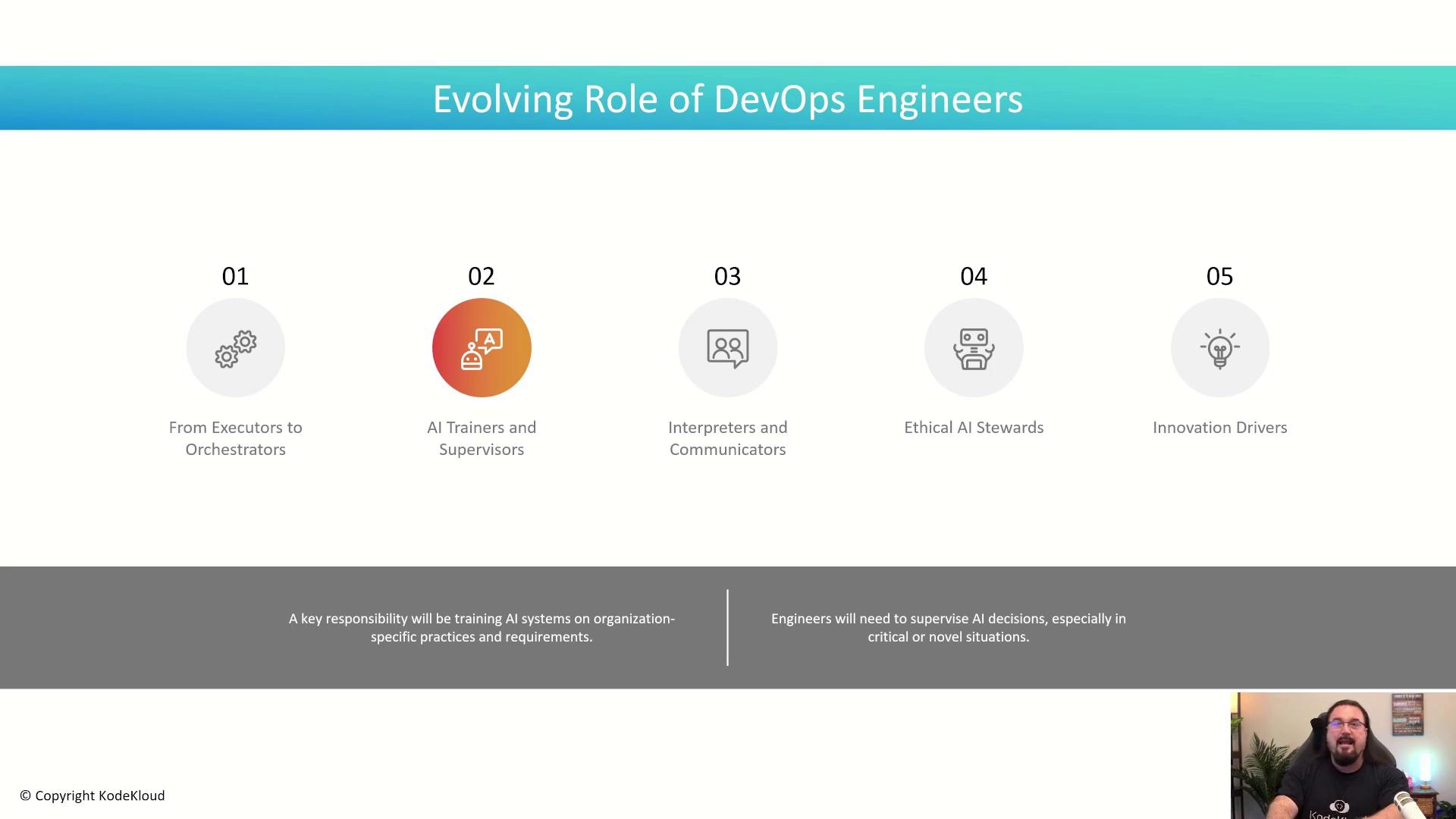
Note
Supervision isn’t about micromanagement. It’s about crafting validation rules, escalation policies, and confidence thresholds for AI agents.
Interpreters and Communicators
Bridging the gap between AI insights and business stakeholders becomes crucial. You’ll refine prompts, translate technical outputs, and ensure that AI-driven recommendations align with organizational objectives.
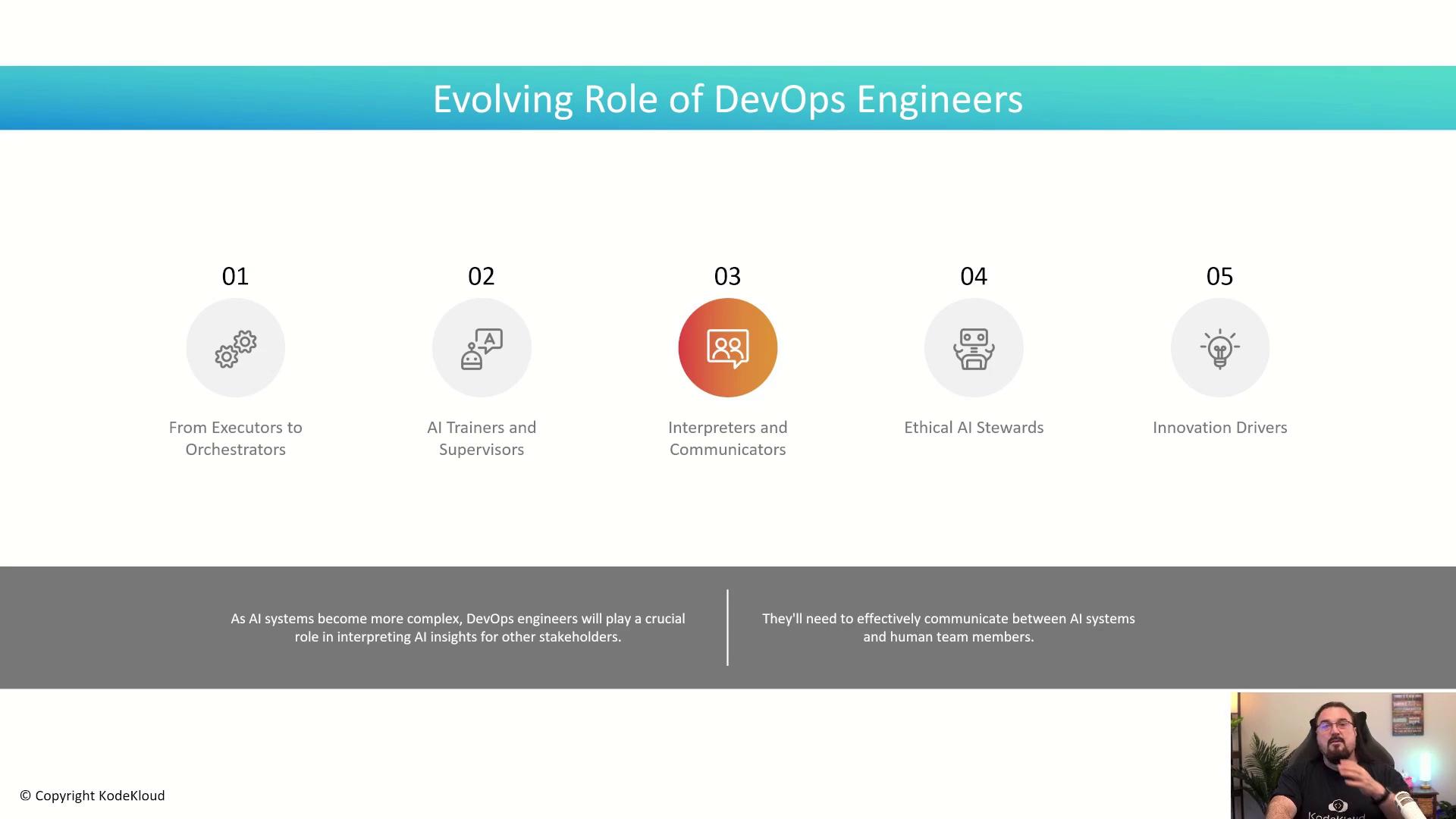
Ethical AI Stewards
With regulatory scrutiny on the rise, you must enforce ethical guidelines—monitoring for bias, preventing hallucinations, and ensuring compliance with corporate and regional policies.
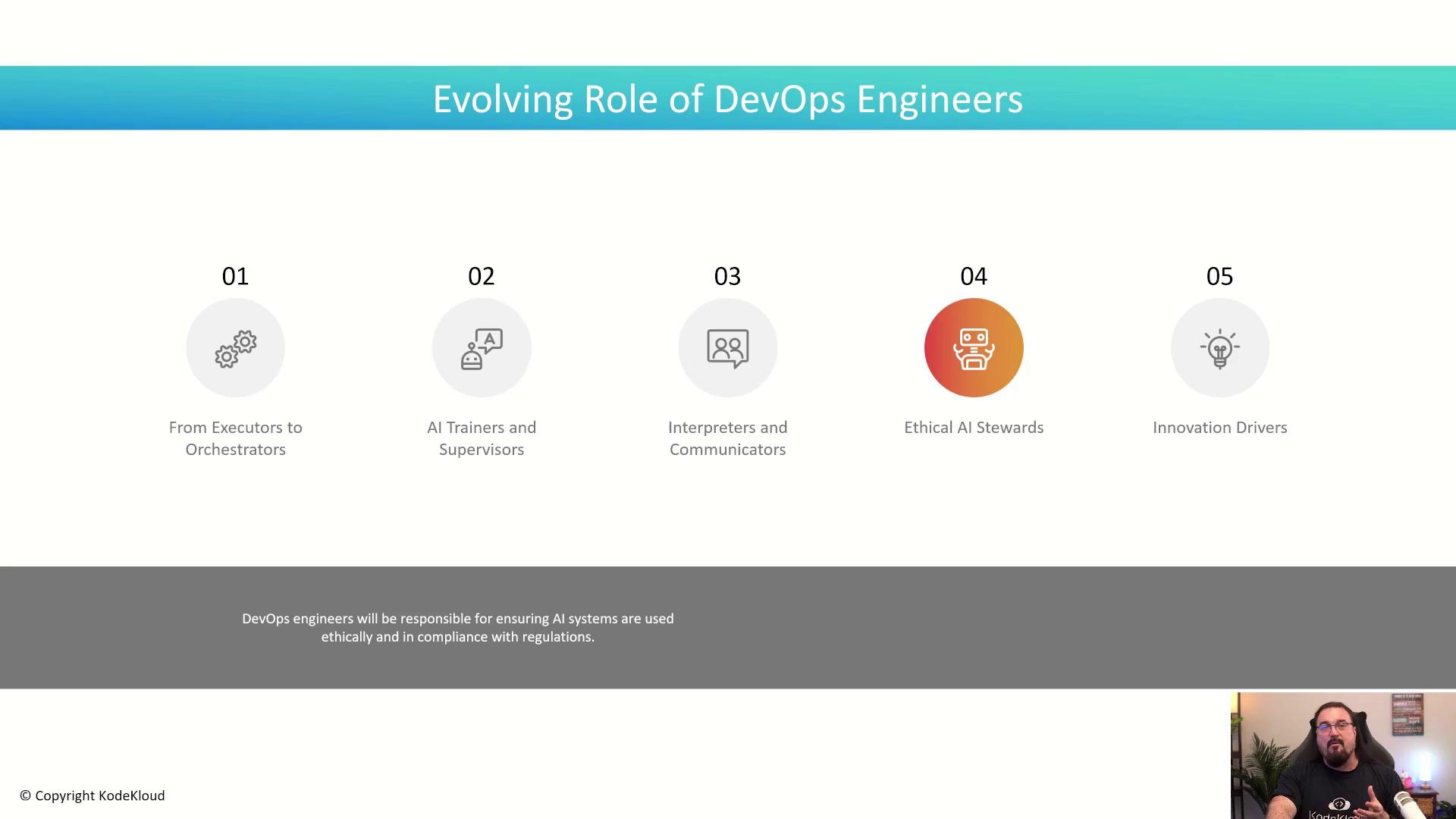
Warning
Neglecting AI ethics can lead to costly compliance violations and reputational damage. Always audit decision pipelines and maintain transparent logs.
Innovation Drivers
Once routine tasks are delegated, your focus turns to ideation: designing new architectures, optimizing cost, and unlocking business value with AI-enhanced pipelines.
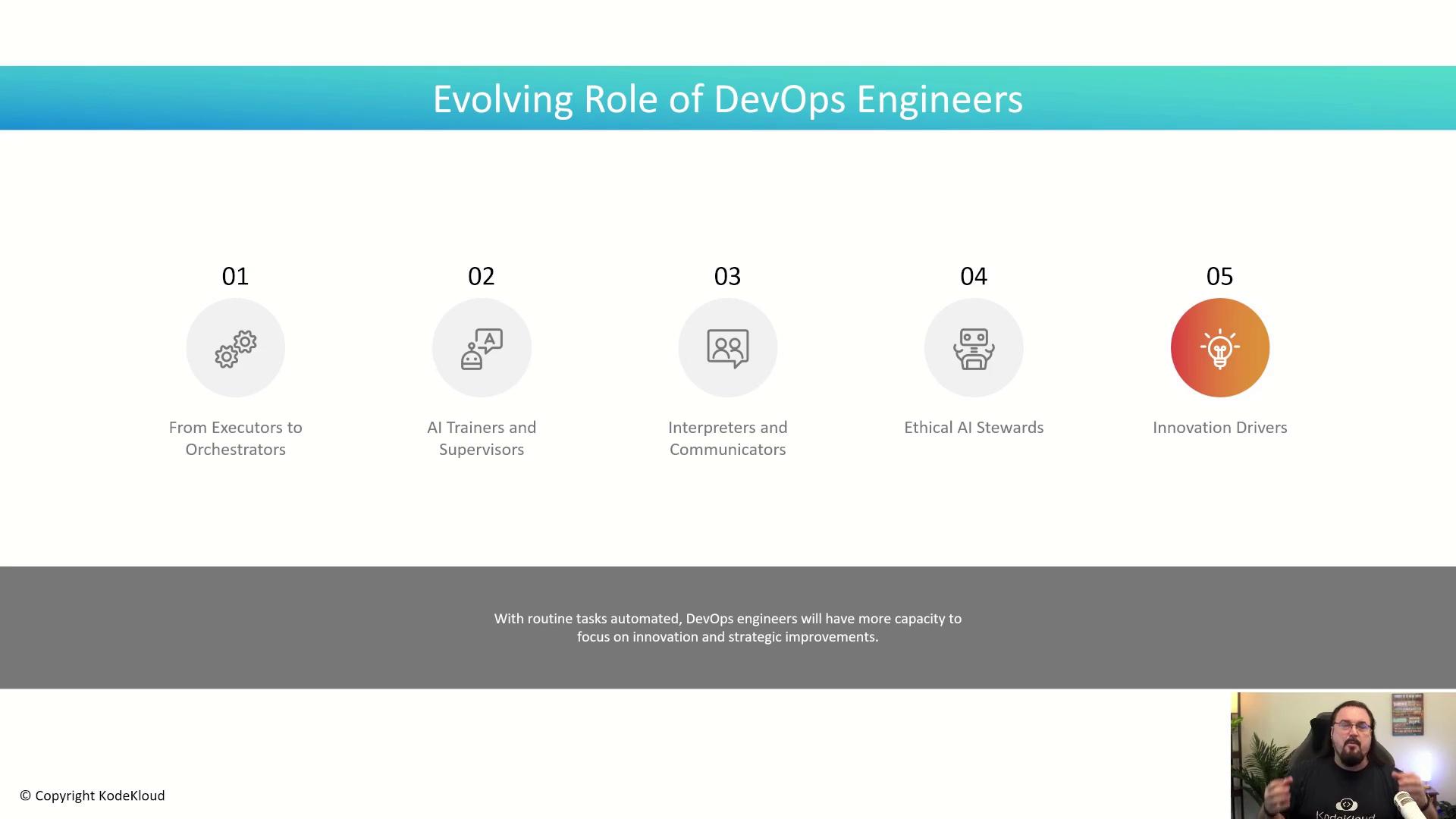
New Skills and Competencies
To excel in AI-driven DevOps, you’ll need a blend of data science, software engineering, and governance expertise.
| Skill Category | Key Topics |
|---|---|
| AI & ML Fundamentals | Algorithms, Neural Networks, NLP, Model Evaluation |
| Data Science & Analytics | Data Preparation, Feature Engineering, Statistical Analysis, Visualization |
| Advanced Programming | Python, R, TypeScript, Go; AI Frameworks (AutoGen, PyTorch, TensorFlow, LangChain) |
| AI Ethics & Governance | Bias Detection, Fairness Metrics, Regulatory Compliance |
| Systems Thinking | Resilient Architectures, Cost Optimization, Self-Healing Design |
| Soft Skills | Communication, Adaptability, Creative Problem-Solving, Continuous Learning |
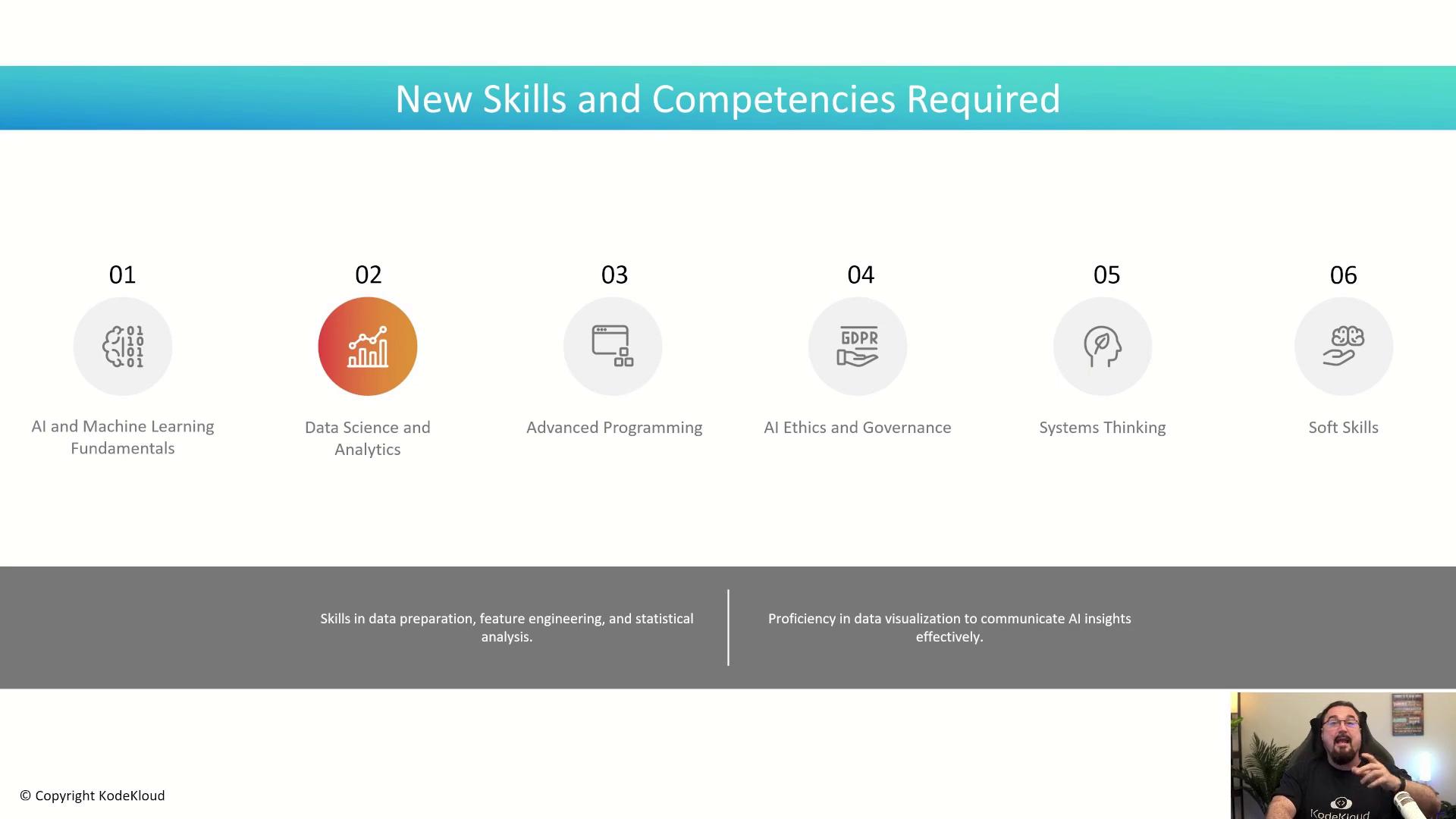
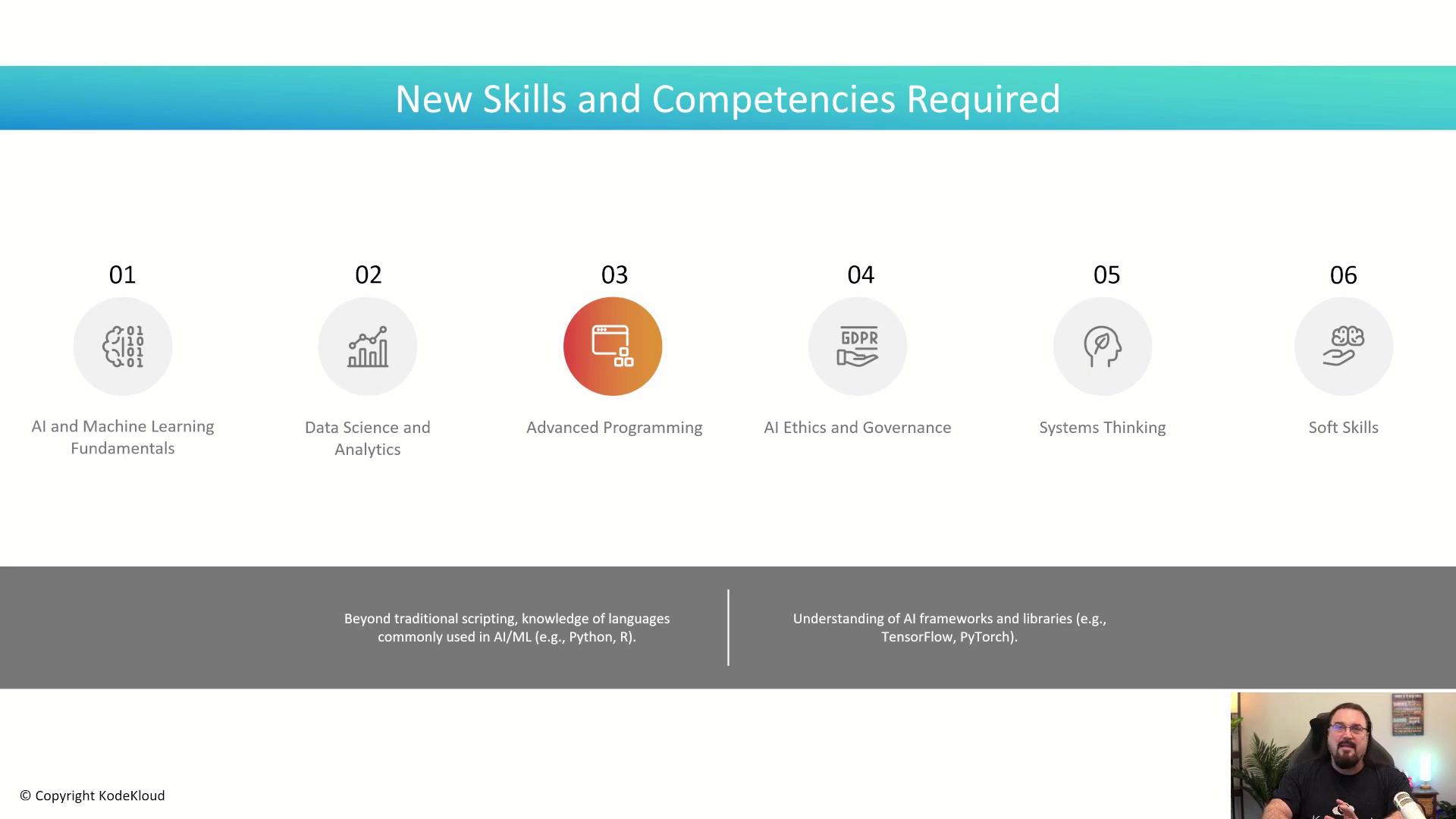
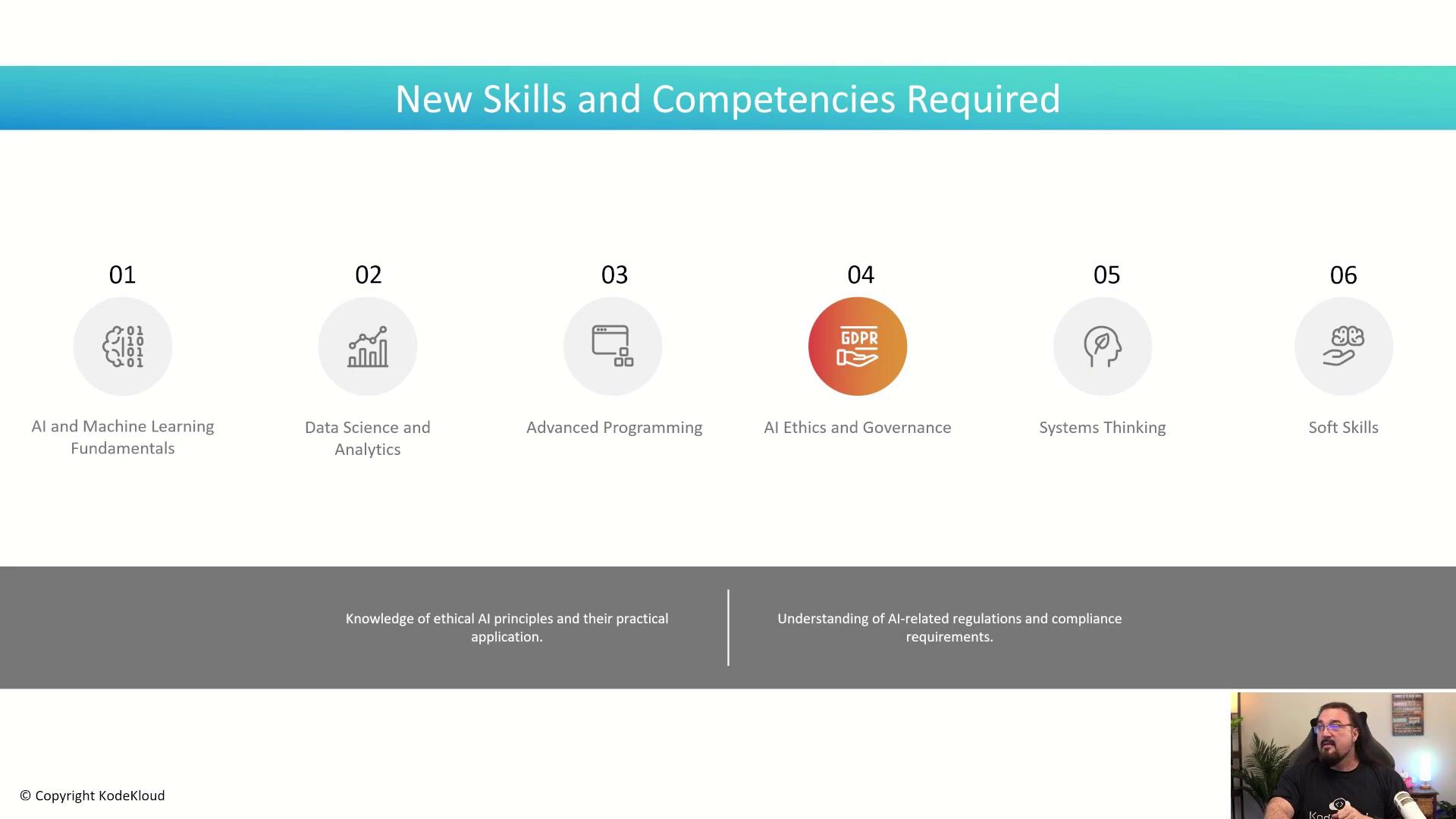
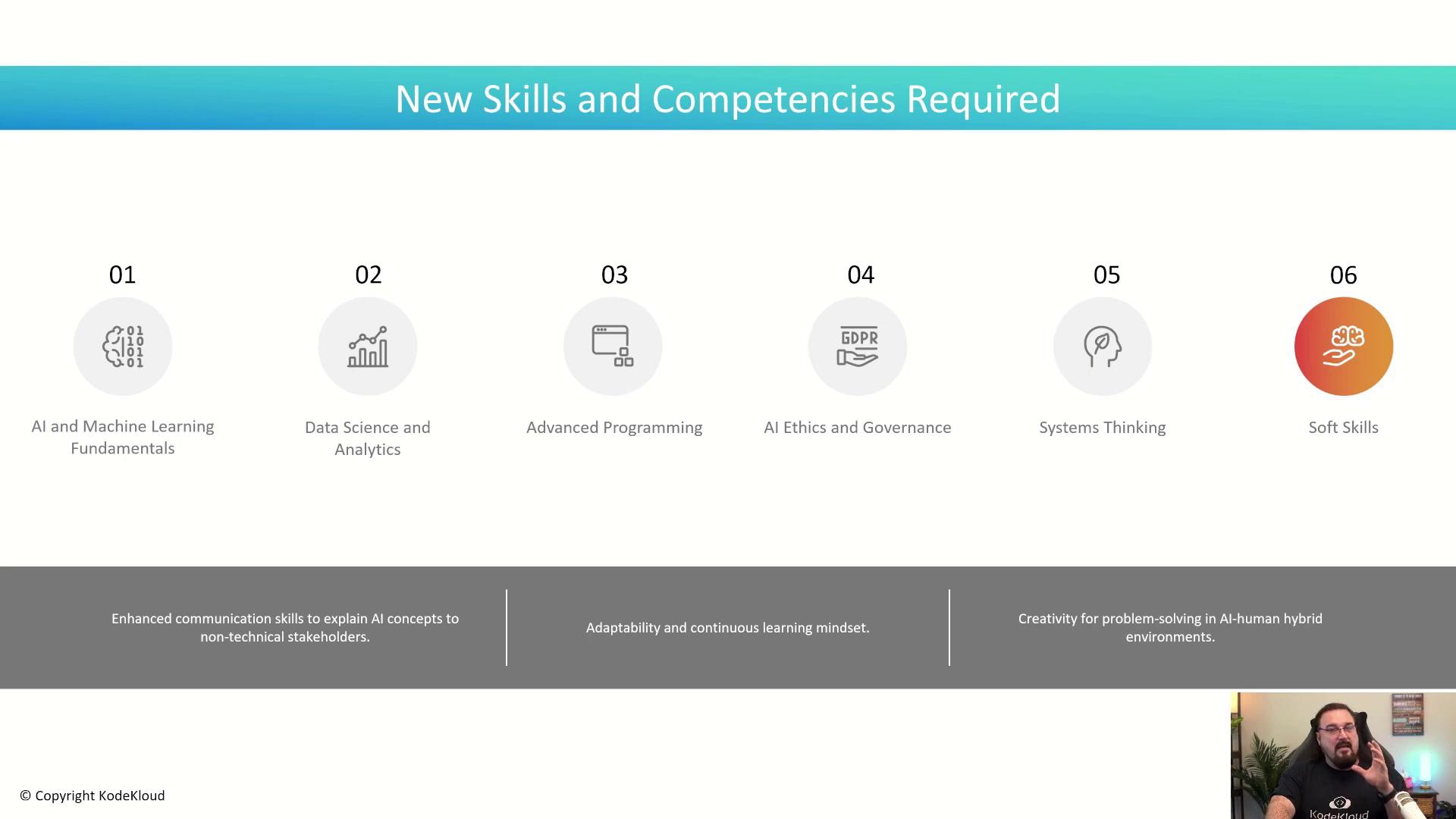
Emerging Job Roles
AI augmentation gives rise to specialized positions:
| Role | Description |
|---|---|
| AI Operations Specialist | Manages AI-driven pipelines and monitors agent performance |
| DevOps AI Trainer | Designs training datasets and supervises model fine-tuning |
| AI Ethics Officer | Defines policies and audits AI workflows for compliance |
| DevOps Data Scientist | Analyzes operational metrics and integrates ML into CI/CD |
| Autonomous Systems Architect | Designs self-healing, scalable infrastructures powered by AI |
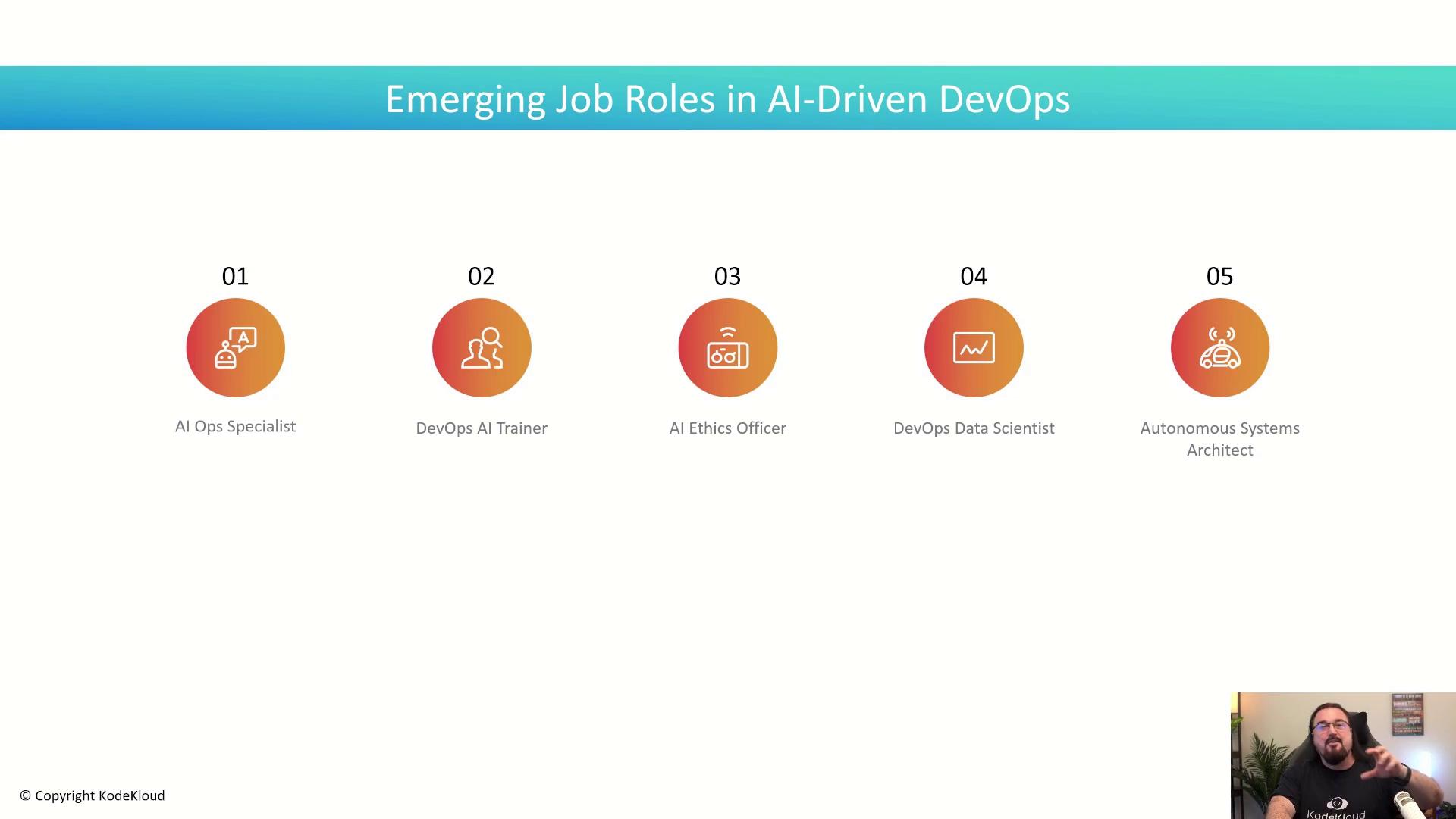
Organization-Wide Impact
AI empowers new ways of collaborating:
- Cross-Functional AI Teams: Embed AI experts into DevOps to accelerate feature delivery.
- Centers of Excellence: Establish governance bodies for shared best practices.
- Flatter Hierarchies: Democratize decision-making with intelligent assistants.
- Global Collaboration: Leverage AI translators and regional models for 24/7 operations.
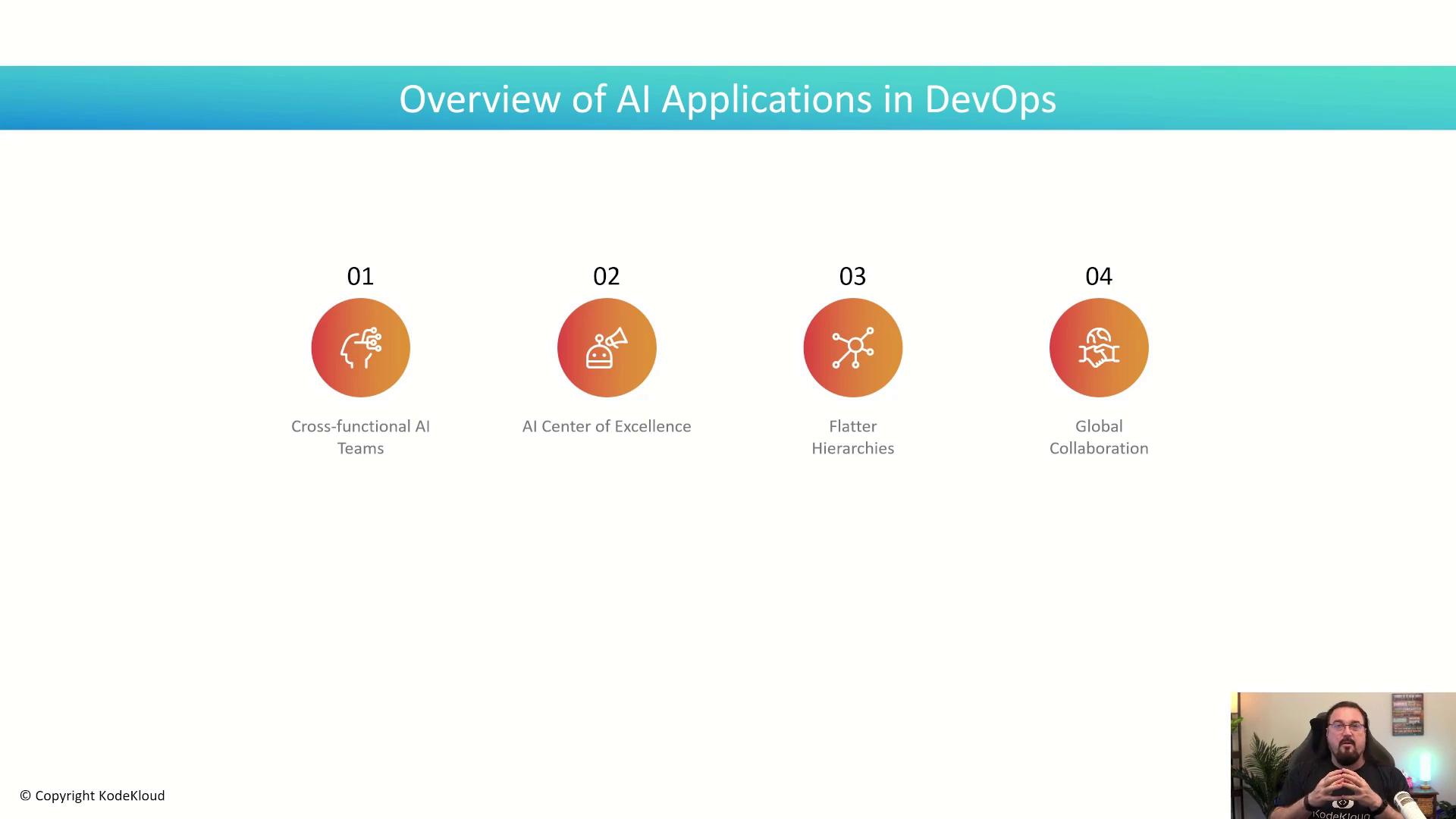
By embracing these new roles and honing critical skills, DevOps engineers will lead the charge in AI-driven innovation—transforming infrastructure management into strategic, value-driven engineering.
References
Watch Video
Watch video content